Here’s When You Should Visit America’s 15 Most Popular National Parks
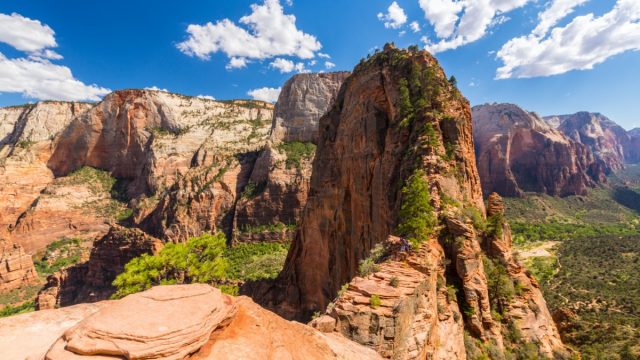
When it comes to enjoying the splendor of America’s 62 national parks, there’s no bad time to get outside and breathe some fresh air. But that doesn’t mean that there isn’t a best time to visit the rugged peaks, impressive formations, inspiring waterways, and jaw-dropping vistas of America’s protected public lands. With more than 318 million people visiting these national treasures at the U.S. National Park Service’s last count, there are crowds to beat. And with fluctuating temperatures, environmental dangers, and road closures, there are seasonal conditions that must be considered when planning a visit as well.
But no need to fret—we did the heavy lifting and research for the best time to visit each of America’s most popular national parks, so you can enjoy your outdoor adventure. All you need to do is mark your calendar, pack your America the Beautiful pass, and start exploring. And for more amazing wonders of the country, check out the 100 Destinations So Magical You Won’t Believe They’re in the U.S.
1
Great Smoky Mountains National Park, Tennessee
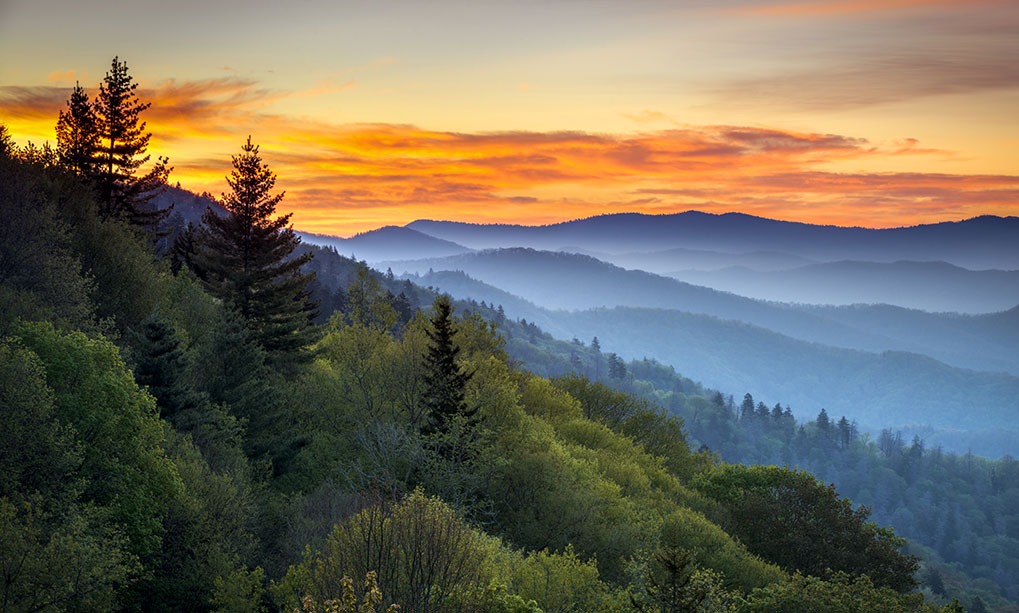
When to go: May-June or August-October
Tucked into a scenic corner of eastern Tennessee, Great Smoky Mountains National Park draws visitors from all around the Midwest (and the entire country for that matter), thanks to its easy accessibility, seasonal colors, and gorgeous backdrop of rolling mountains. And because it is located in a temperate Southeast climate, there aren’t many bad times to visit. Frankly, it all comes down to a matter of personal preference—whether you want to drive through fiery fall colors during September in the Smokies or beat the summer crowds by visiting in May, you have options. Note: There are road closures in the winter due to weather. This year, Cades Cove Loop Road (a winding 11-mile road that weaves around the park’s impressive peaks) is closed January 5 through February 29, 2020.
2
Grand Canyon National Park, Arizona
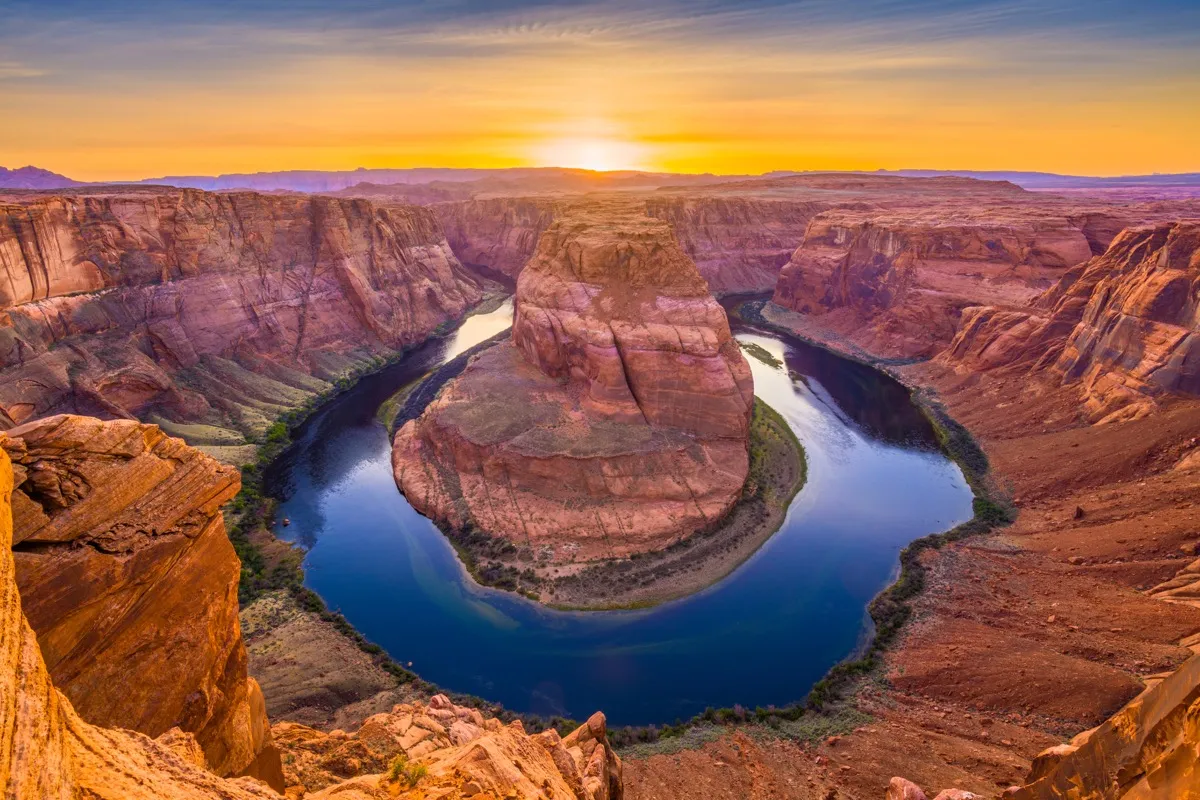
When to go: September-November or March-May
This legendary park’s peak season is summer—which doesn’t make much sense because that’s when temperatures are scorching. If you want to enjoy the grandeur of this Wonder of the World without the hordes (or a nasty case of heat exhaustion), we recommend visiting during the shoulder seasons of fall and spring. The North Rim (about a five-hour drive from the South Rim) is often far less popular with tourists when compared to the South Rim (where the major viewpoints are) and offers unique views of oft-unseen features of the terrain, such as Point Imperial and Cape Royal. Additionally, lodging and visitor services are available from May 15 through October 15 on the North Rim.
3
White Sands National Park, New Mexico
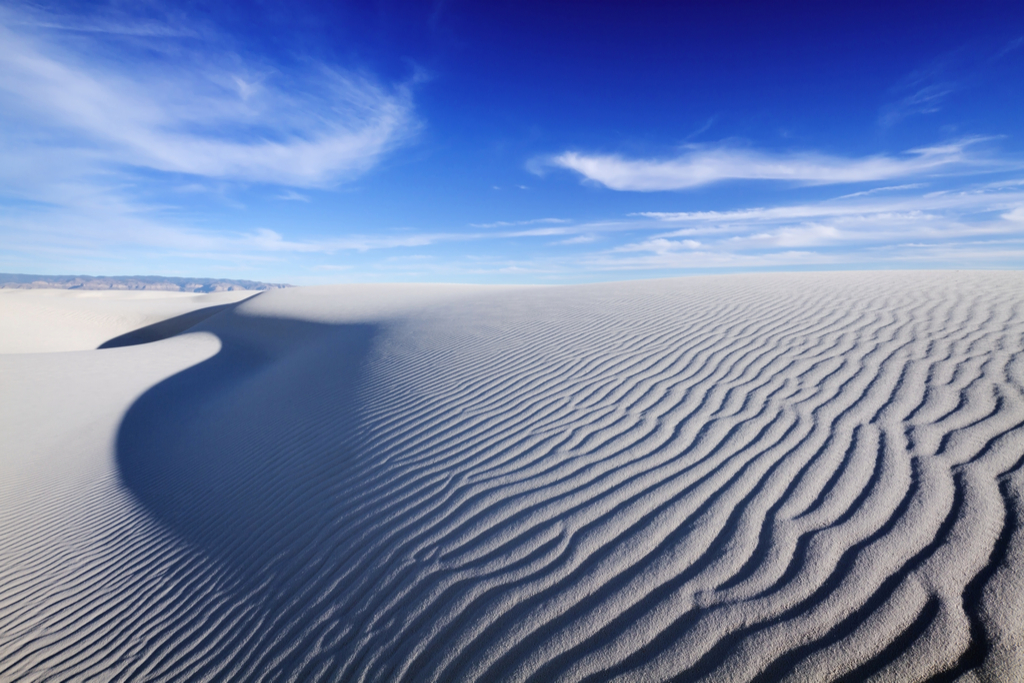
When to go: March-June
Ever wanted to see an ocean of white glitter? Well then, White Sands National Park is waiting for you. In December 2019, this area officially became a national park, featuring a 275-square-mile sea of rare white gypsum (not sand!) dunes that look like something out of a dream. Because White Sands is located in the desert of New Mexico, summer months can be far too hot to enjoy here. The spring is much more mild and is the time when the yuccas bloom with their lovely white flowers. Just try to pick a day when the winds aren’t high! If you often travel alone, check out The Top Destination for Solo Travelers This Summer.
4
Rocky Mountain National Park, Colorado
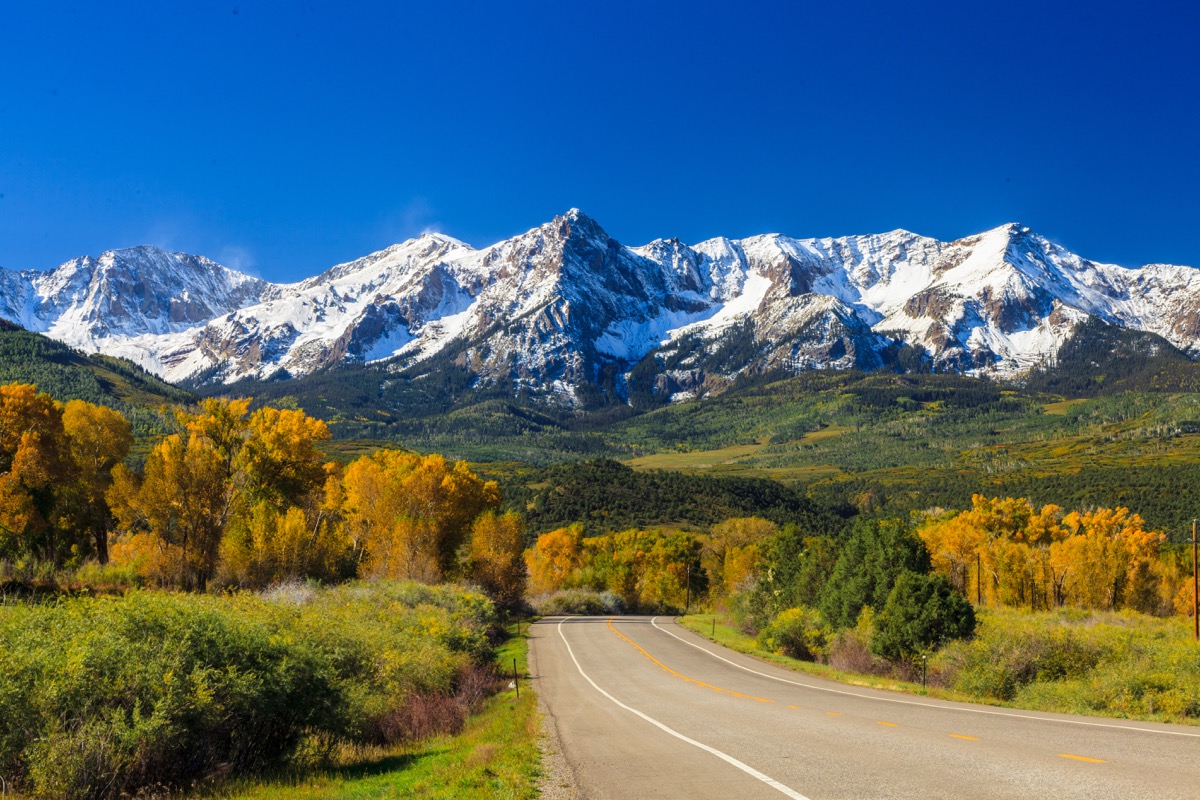
When to go: May or September-October
Whether you like to snowshoe, ski, rock climb, camp, hike, or horseback ride, Rocky Mountain National Park is a year-round destination for folks who like to get outside and adventure. This park is a mountain lover’s dream with a gaggle of towering ridges that slice into the sky, including one legendary Colorado “fourteener”—the 14,259-foot Long’s Peak. But thanks to its close proximity to Denver, this park sees some of the highest visitor numbers year over year. The most popular months to visit the park are June to September, when people backpack and camp overnight). If you want to avoid the crowds and find some solitude amongst the miles-high mountains, try booking your trip for May (when winter snows are melting and new spring growth is happening in lower elevations of the park) or October (when the park is wrapped in autumnal colors and the cool crispness of winter is on the horizon).
5
Zion National Park, Utah
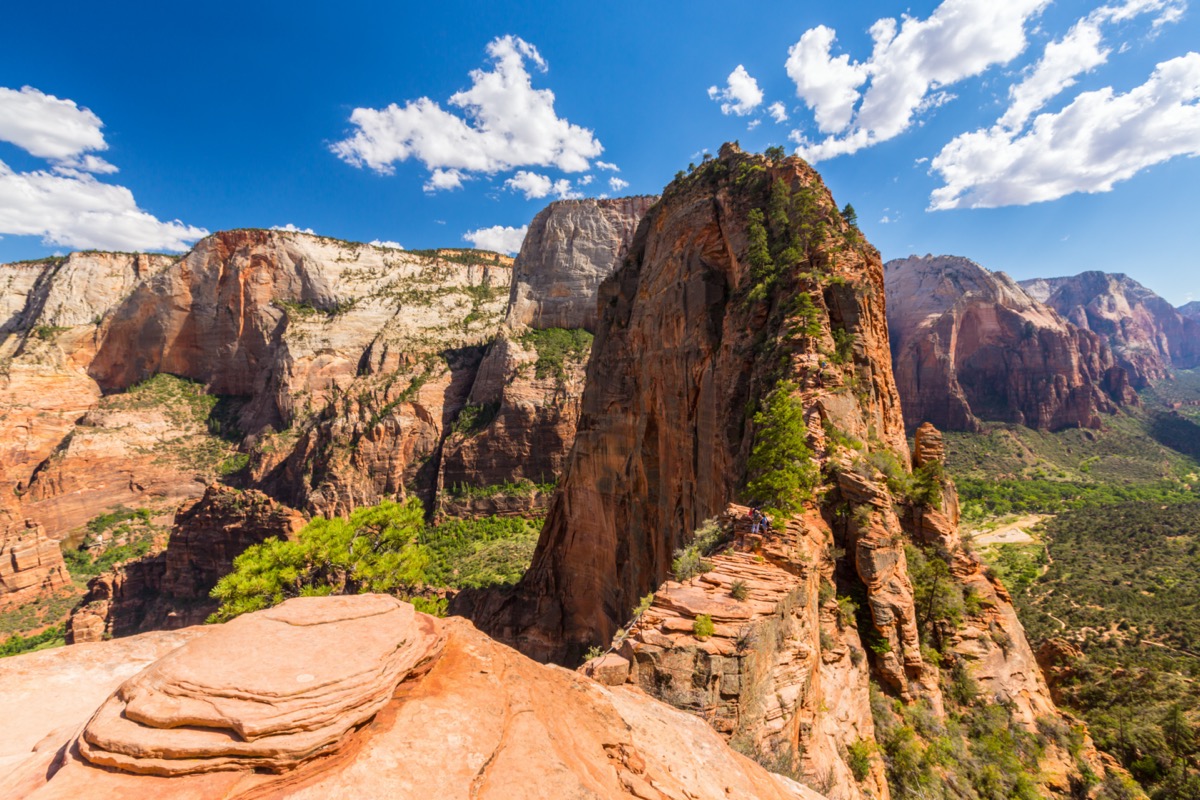
When to go: January-May or September-December
Home to two of the most iconic hiking routes in America’s national parks (Angels Landing and The Narrows), Zion National Park is a sight to be seen and a place to be experienced. While you can visit anytime of the year, we recommend avoiding the summer months, if possible. This is the most crowded time for Zion, meaning that trails are bogged down by visitors, and lodging is markedly more expensive. If you have the flexibility, visit Zion in the fall, spring, and yes, winter too. Even in January, mild temperatures average in the mid-50s. There may be snow on the ground—and food and lodging may be harder to come by since some restaurants and motels will be closed—but there will be barely anyone else there, giving you a national park almost all to yourself.
6
Yellowstone National Park, Wyoming
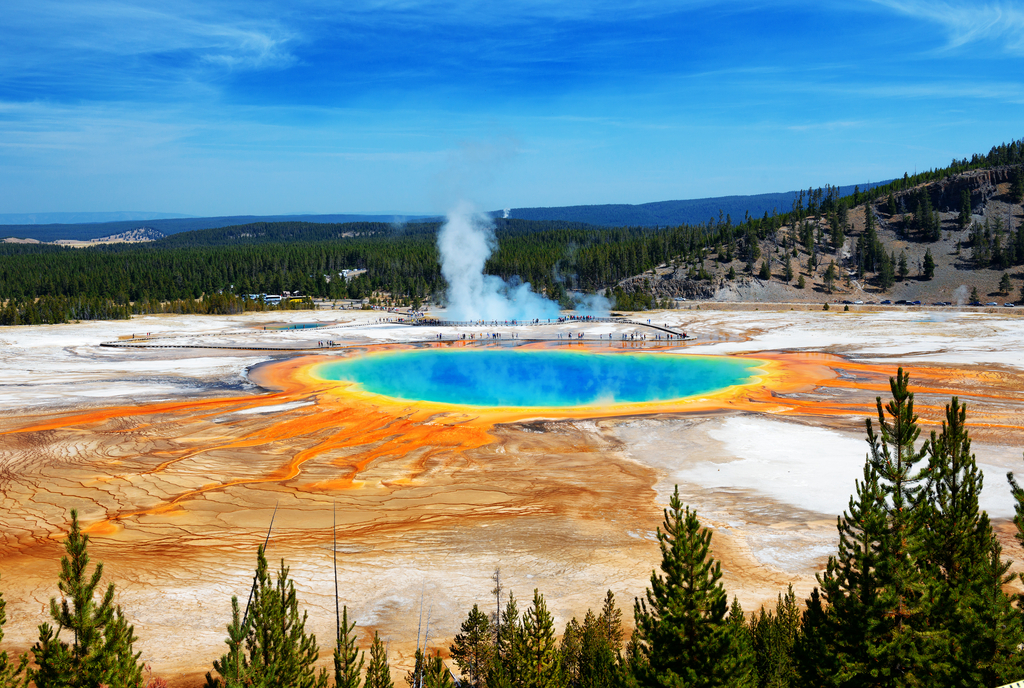
When to go: November-May
Officially inducted in March 1872, Yellowstone was the first national park in the U.S. Today, it still holds its legendary status, boasting opportunities to see geothermal springs and geysers, as well as buffalo and one of the last wild wolf populations in the country. Although the summer months are the busiest, they aren’t the greatest for wildlife viewing. March and April are the best months to view bears, while the winter months are ideal for wolves and bighorn sheep—so consider visiting Yellowstone, and specifically the Lamar Valley, in the winter or spring. There won’t be many other people there, and the road through the park will be open for you to enjoy (without the bumper-to-bumper traffic).
7
Yosemite National Park, California
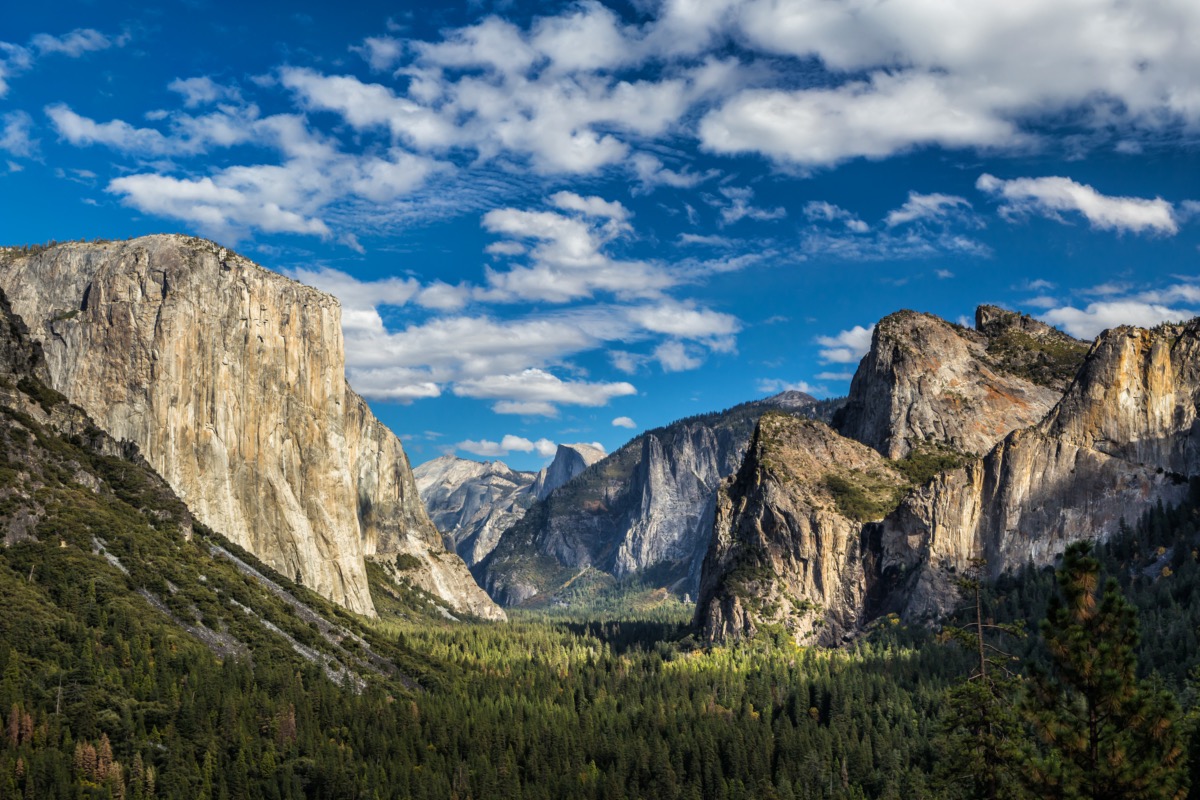
When to go: April-June or September-November
As with almost every national park, the peak season for tourism in Yosemite is the summer, when the weather is warm, the kids are out of school, and vacation days are easy to come by. However, you’d be remiss to not visit this granite-filled valley in the spring to see the wildflowers bloom and the waterfalls cascade from the forest. Pro tip: Tioga Road and Glacier Point Road (beyond Badger Pass) are closed during the winter months, but reopen in May, giving visitors maximum access to Yosemite.
8
Acadia National Park, Maine
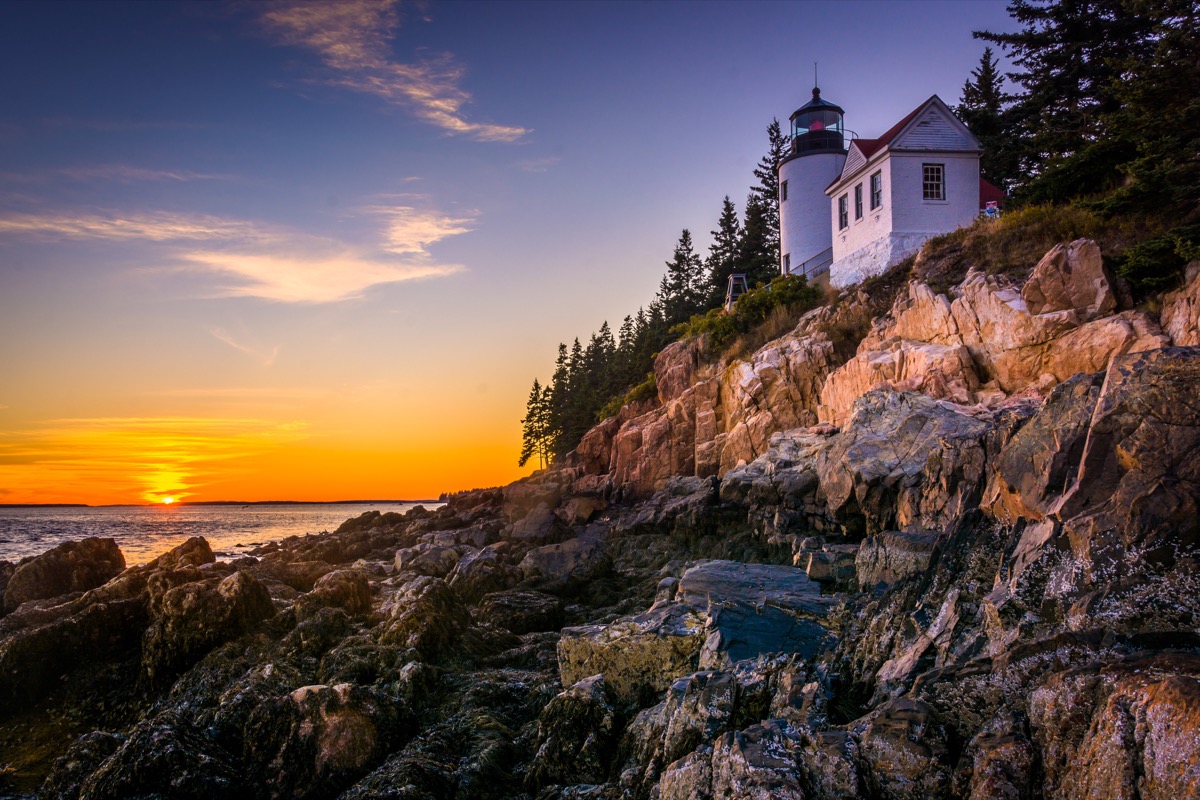
When to go: September-November
For those who bet that all of the most beautiful national parks lie west of the Mississippi, we raise you one: Acadia National Park. This Atlantic coastline is located primarily on Maine’s Mount Desert Island and is home to moose, black bears, whales, and countless birds. Its unique and rugged features make for an especially attractive destination on the East Coast. Since spring on Maine’s coast is often filled with soggy rain and lots of fog, we recommend visiting Acadia during the fall, when the air is clear and so are the crowds. If you want to drive to these astonishing eastern attractions, These Are the Best Road Trips in New England.
9
Grand Teton National Park, Wyoming
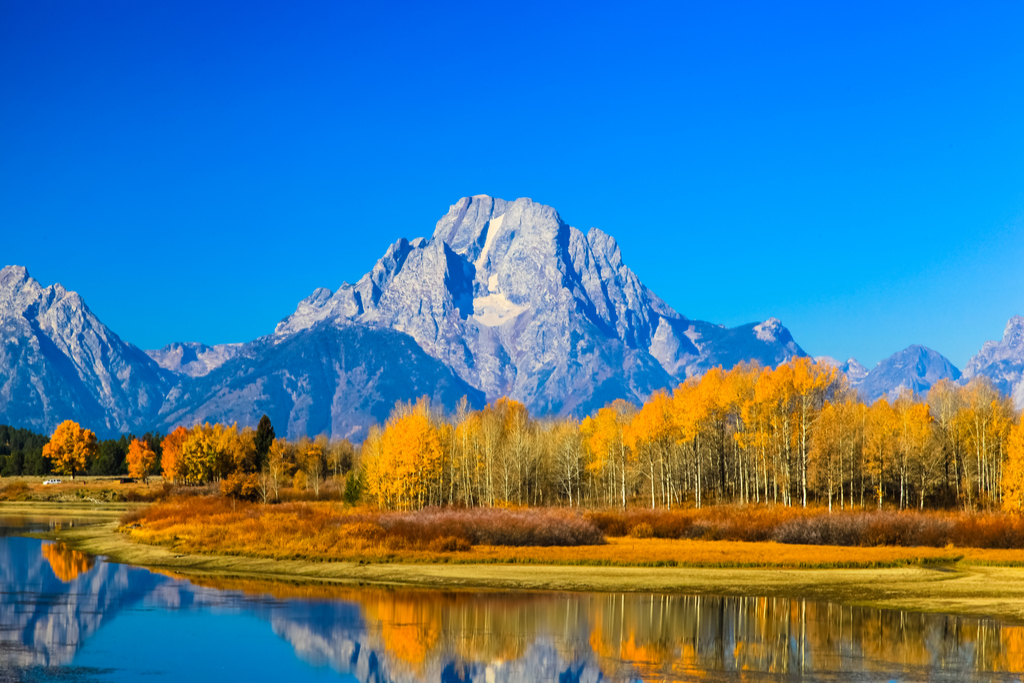
When to go: September
Grand Teton National Park is home to the youngest mountains in the lower 48—and they are still growing! Located in the rugged western nook of Jackson Hole, Wyoming, this park boasts more than 200 miles of trails and some of the most scenic vistas (think alpine lakes enveloped in craggy peaks) in the world. But that makes this park quite—you guessed it—popular. According to Grand Teton park rangers, September is the best month to visit. It’s less crowded, the colors of flowers and foliage are beautiful, there is still bountiful wildlife to see (because the elk haven’t migrated and the bears aren’t hibernating), and the summer thunderstorm season has subsided.
10
Olympic National Park, Washington
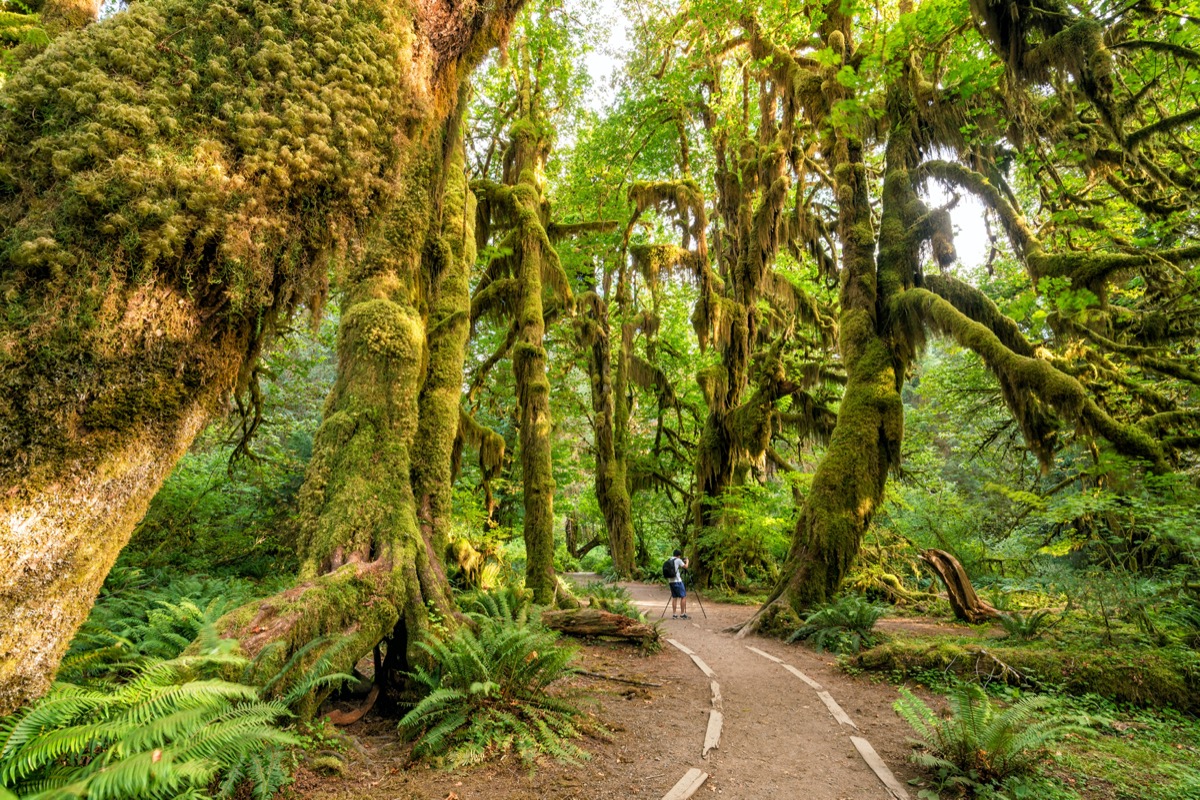
When to go: May-June or September
Olympic National Park is one of the most diverse parks you can visit and hosts a handful of distinct ecosystems—from glaciers and high alpine meadows to temperate rainforests and Pacific coastline. And because of its vastly different biological profile, there are certain reasons to visit Olympic National Park at different times of the year. Spring (May-June) is the best for bird watching and catching a glimpse of wild black bears—but the spring months also bring with them drizzly, foggy Pacific Northwest weather. September offers drier days and the opportunity to see Roosevelt elk in their natural habitat during breeding season. But no matter when you visit, no trip to Olympic National Park is complete without a drive up to Hurricane Ridge (which is closed during the winter months).
11
Bryce Canyon National Park, Utah
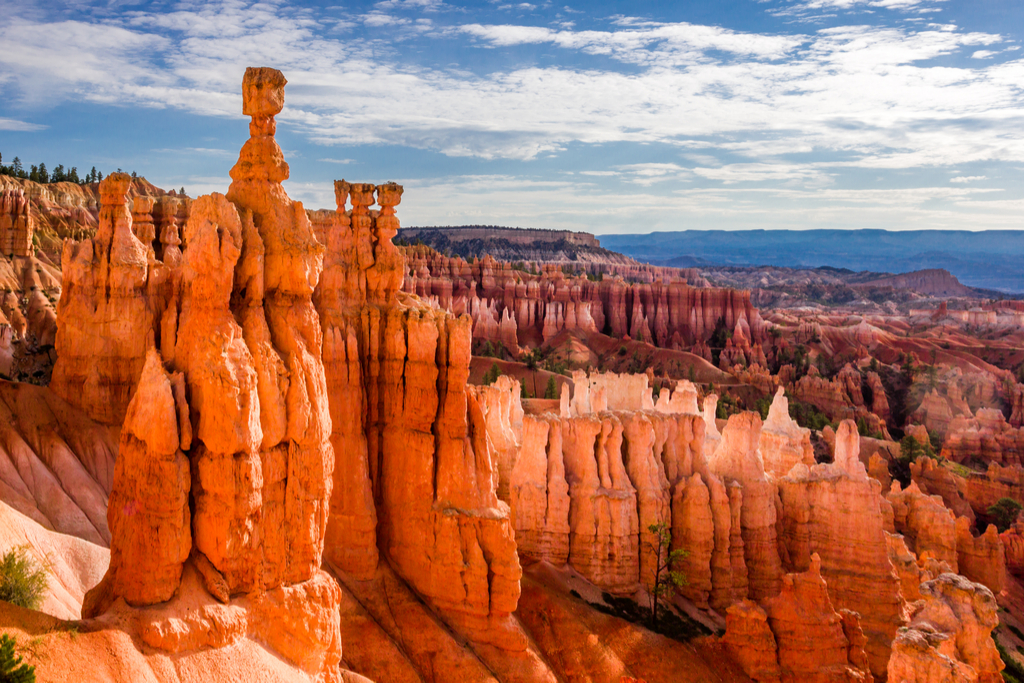
When to go: May-September
Bryce Canyon National Park is a special place. It’s not a huge, sprawling park, but it is filled with desert spires, canyons, plateaus, and mysterious hoodoos (rock spires and pinnacles). But unlike the other four national parks located in the southern Utah desert, Bryce Canyon is unique in the sense that you should visit in the summer months. Because it sits at a higher elevation, Bryce Canyon often experiences cooler temperatures in comparison to other desert locations.
12
Glacier National Park, Montana
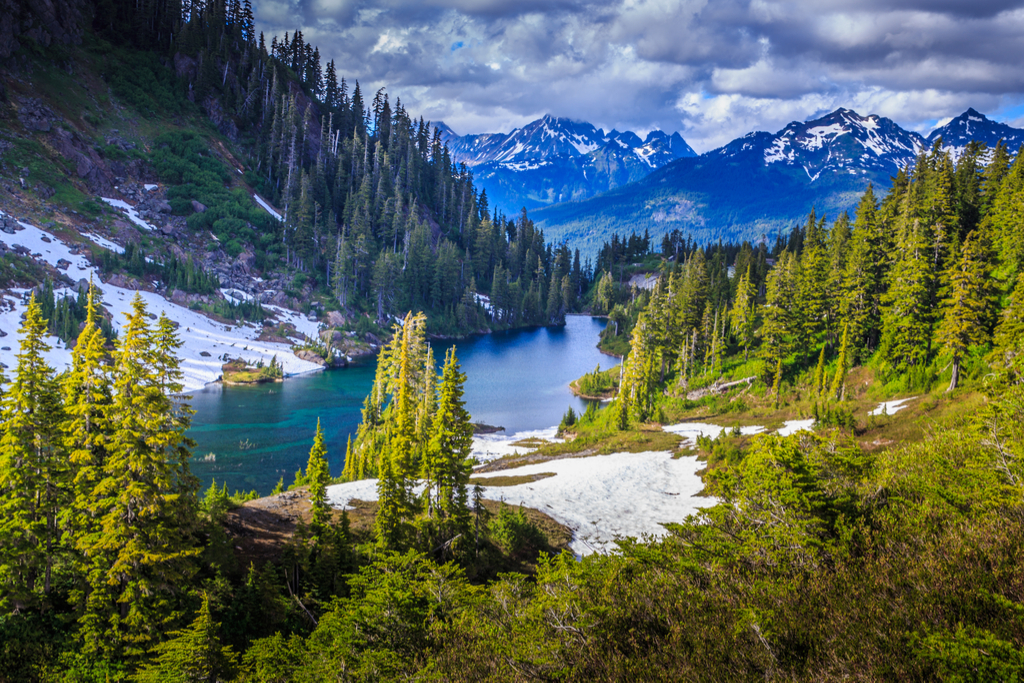
When to go: July-September
With more than 700 miles of trails within Glacier National Park’s boundaries, those who are seeking solitude are bound to be able to find it, regardless of the season. Unlike the other national parks, Glacier is best during peak summer season, when the rain season has ended and the snow has melted from higher elevations. Pro tip: Don’t miss a scenic drive along the Going-to-the-Sun Road, a 50-mile stretch that crosses the Continental Divide and cruises along the shores of Saint Mary Lake.
13
Joshua Tree National Park, California
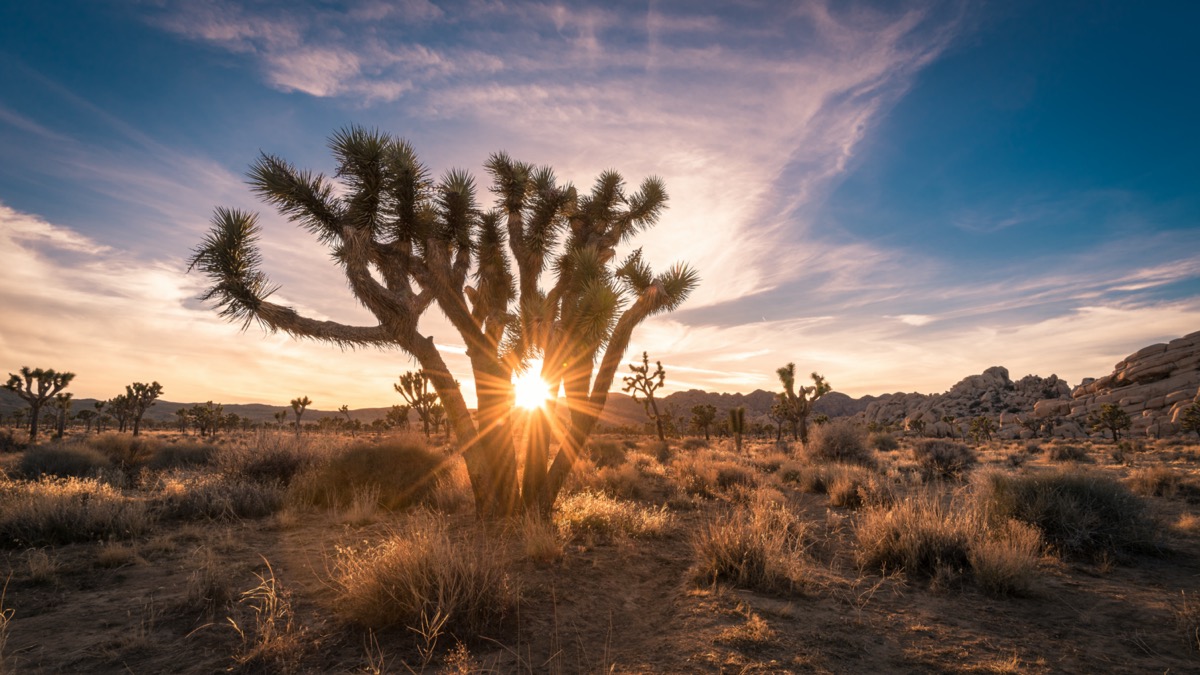
When to go: March-May
Because Joshua Tree National Park is located in the Mojave Desert, there’s definitely a time to not visit: the summer. Although families tend to gather here in the hottest months of the year, we recommend planning your trip in early spring when temperatures are much more mild, the desert wildflowers are blooming, and the crowds are thinned out. Pro tip: Start your days in the park early—sunrise here is beautiful, and you’ll rarely see another soul out there with you.
14
Cuyahoga Valley National Park, Ohio
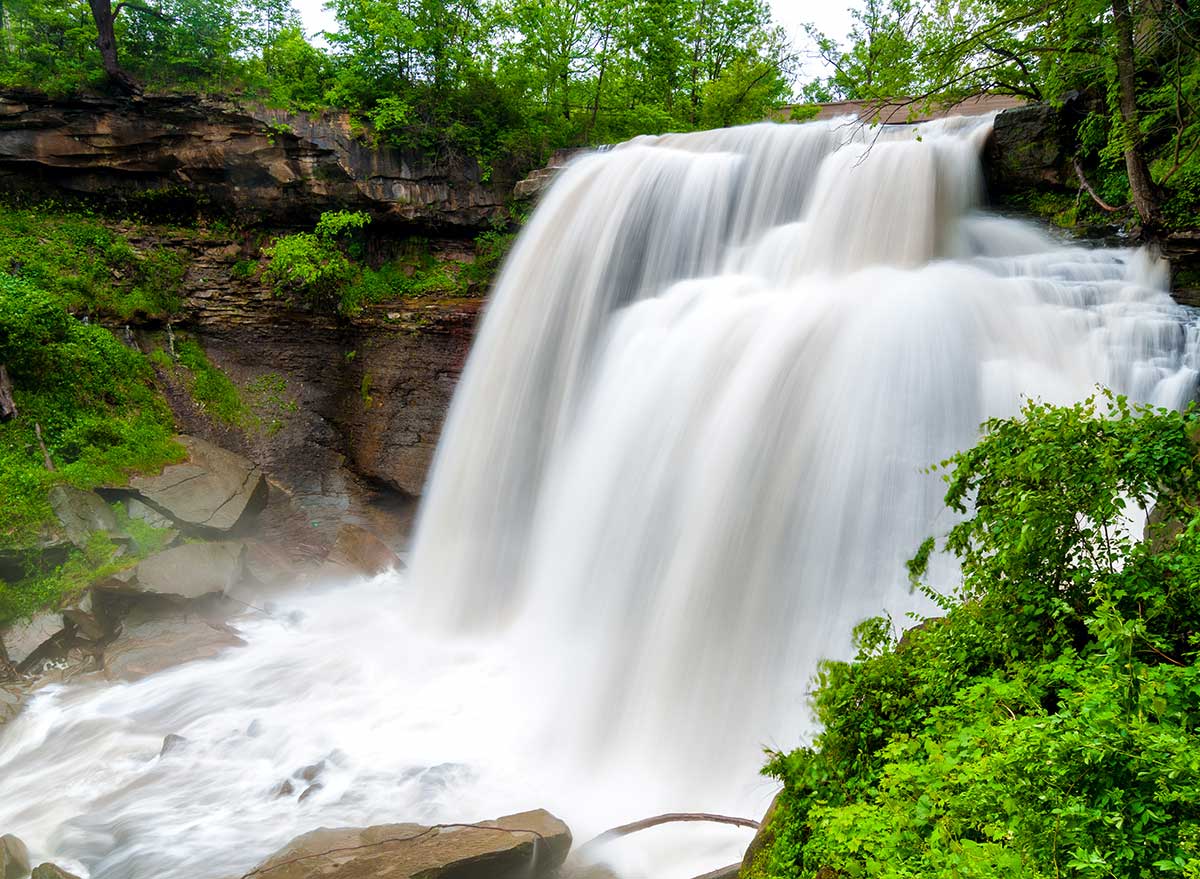
When to go: October-November
Cuyahoga Valley is on the smaller side of national parks—and is one of the younger ones, too, since it was founded in 2000. But due to its close proximity to Cleveland, it attracts a high amount of annual visitors seeking a quiet respite in nature away from the urban hustle. And although the park has few seasonal restrictions, the best time of the year to visit has to be fall, when autumnal colors paint the dense forests in warm colors that overlook waterways such as Brandywine Falls. And for more stunning cascades, browse through the 15 Waterfalls So Magical You Won’t Believe They’re in the U.S.
15
Hawaii Volcanoes National Park
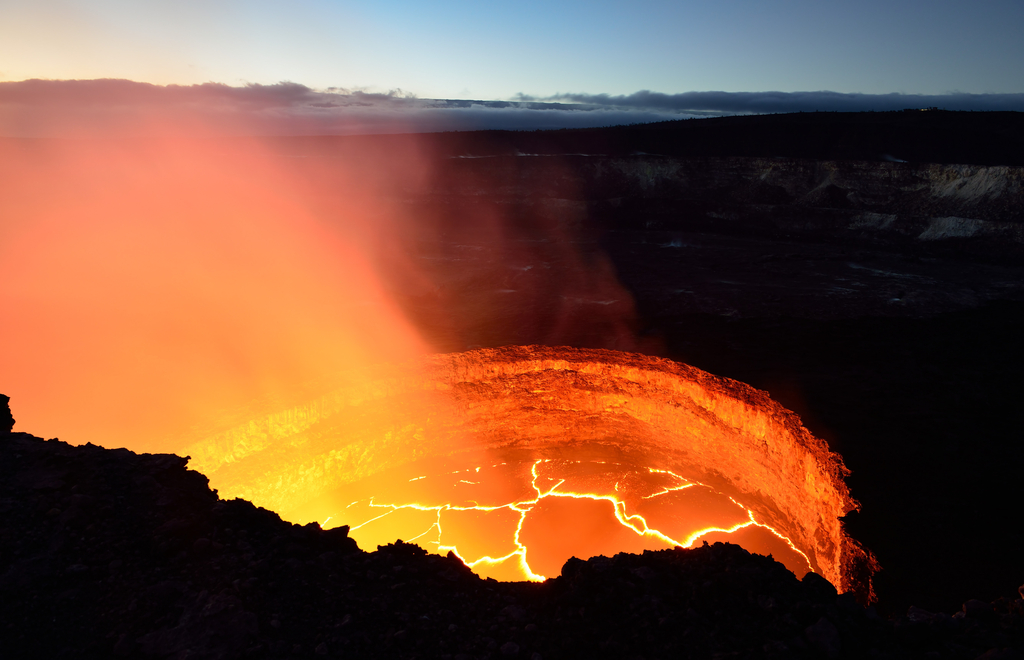
When to go: September-March
Rising from sea level to the zenith of a 13,677-foot mountain, this national park on Hawaii’s Big Island is one of the most impressive America has to offer. And to make it even more remarkable, the park is home to the summits of two of the world’s most active volcanoes: Kīlauea and Mauna Loa. To truly enjoy its tropical splendor, avoid the summer crowds (and the rainy season) by visiting in the fall.